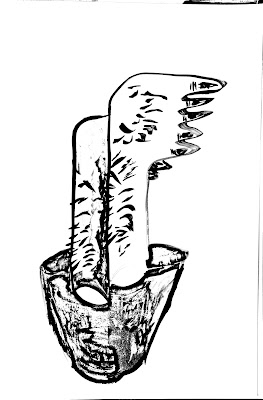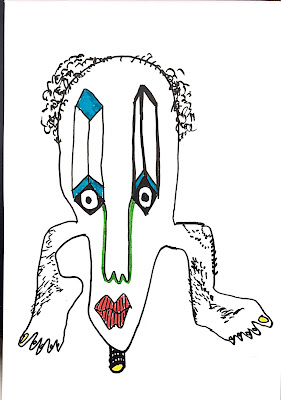(http://polishanimations.pl/en/news/2347/polish_animated_films_conquer_cairo)
Watch it Again: Animation Mini-Series
This review was written by Jessica Schouela
as a part of a mini-series project on animations played at previous Play Poland
Film Festivals. Our aim is to continue to promote films that we have shown in
the past in order to encourage excitement about future screenings.
Perceiving the worlds of de
Chirico
The animation titled “Lost Senses” by
Marcin Wasilewski tells the tragic story of a man and a woman who ride or surf
on pieces of concrete through the clouds to arrive at a city on a floating
island. The film pays homage to the style of Italian Metaphysical painter
Giorgio de Chirico, who greatly influenced the Surrealists. The woman, who
holds a photograph of her and the man, reaches the island first. As the man,
tightly gripping one red rose follows a few seconds later, he sees her at a
distance. The wind takes hold of her photograph and she runs after it behind a
building and out of sight. The man, determined to reach his beloved, begins to
run towards her but as he does this, buildings begin to sprout from the ground
like magic trees.
Although he had been somewhat clumsy on his
concrete surfboard, nearly free falling off into layers of sky, his motivation
seems to have provided him with superhero or parkour skills to climb buildings
and soar from one to the other, karate kicking and chopping in mid-air. Running
too quickly, he becomes distracted by a de Chirico style headless nude marble statue,
revealing a single breast. The man runs into a stone block and his head
crumbles like porcelain, breaking into pieces that separately house his eyes, nose,
etc. By the time he and the woman cross paths at the end of the film, she too
is without a head, resulting in each character going unnoticed to the other.
Wasilewski’s animation brilliantly
appropriates de Chirico’s painted architectures for his mise-en-scènes. Each shot looks like it could have been extracted from one of
the painter’s works, as Wasilewski frames the characters and objects as well as
their shadows so that they communicate in a composition recognizable of de
Chirico.
In addition, Wasilewski’s characters,
despite their bodily configurations or materials, are entirely human and
relatable. They are at once awkward and uncoordinated, decisive and resolute,
fogged and frenzied. “Lost Senses” is a fantastically visually narrated tale of
two individuals getting lost in their attempts to find one another. Not only
does the film capture what it feels like to really look at a de Chirico
painting, as if to lose one’s footing within his painted worlds, but it is also
an honest description of how we all get lost everyday in our real lives.














